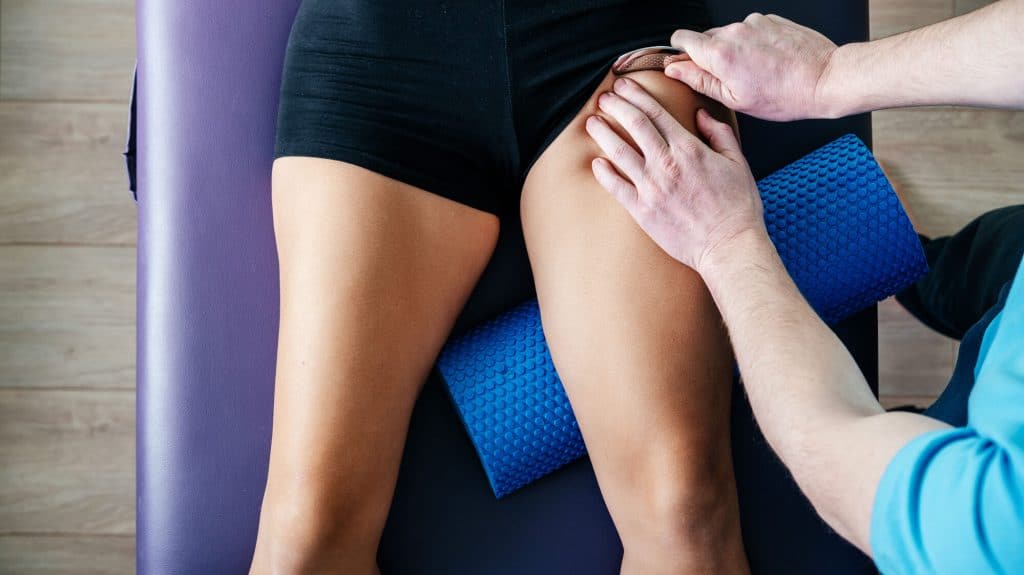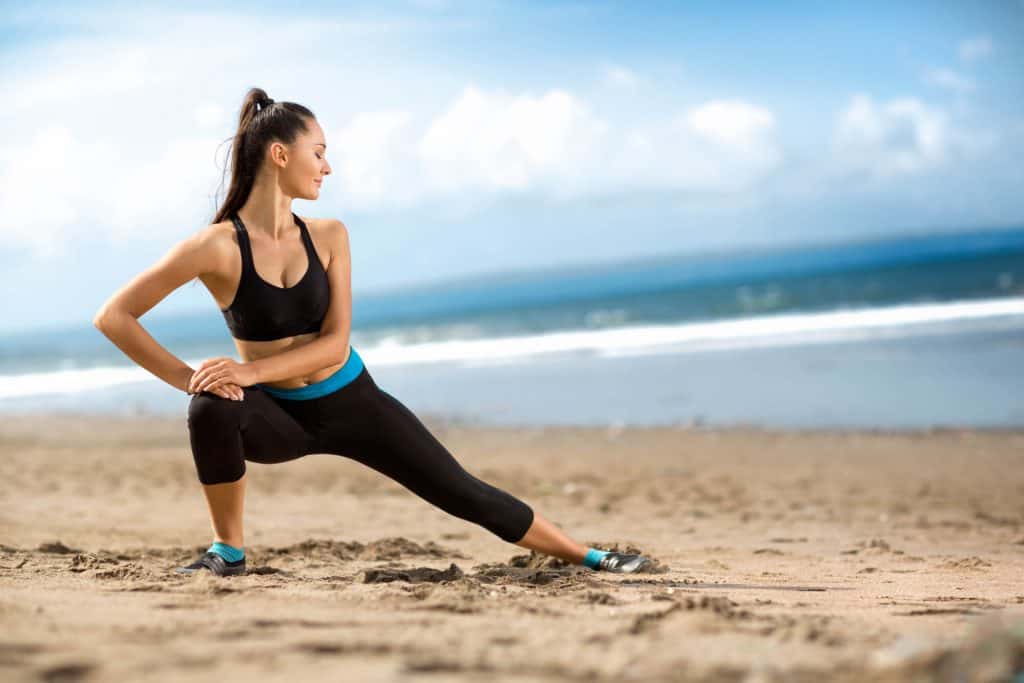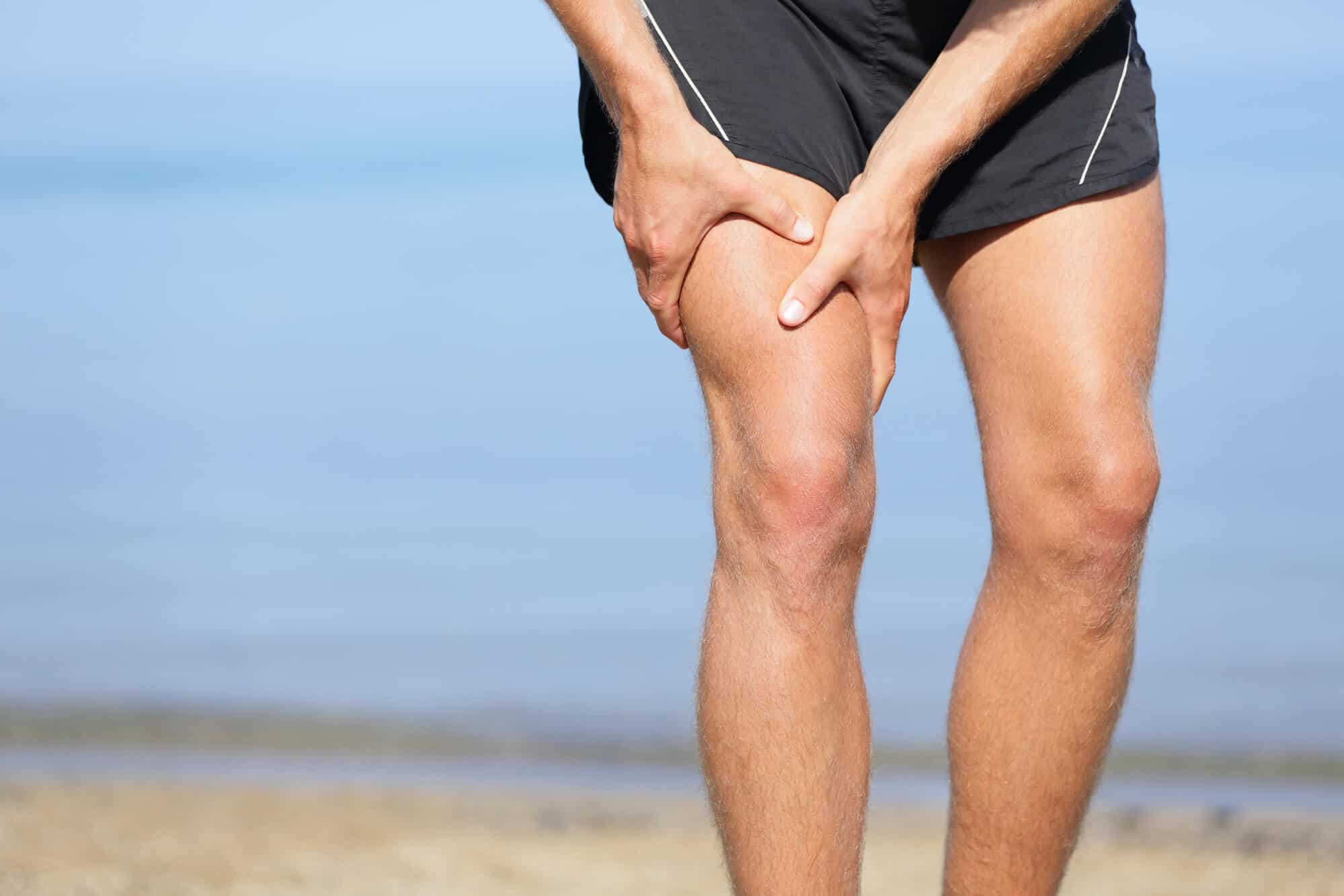Nothing is more satisfying than feeling that tightness in your shins and thighs after a good five-mile run. Yet, when things start to become rather uncomfortable, you’ll begin to worry and eventually ask yourself, “Why do my thighs hurt when I run?”
Well, most runners experience pain in their thighs after running, and it can be mild, moderate, or intense based on the cause. Sometimes, the reason may be overexerted thigh muscles, but in other cases, it could be a nerve issue or more troublesome leg conditions.
To help you understand your thigh pain better, we’ll explain the different causes of this problem in-depth in this article. We’ll also discuss pain relief options and offer prevention tips so that you can be more careful when you go for a jog.
Why Do My Thighs Hurt When I Run: 6 Causes of Thigh Pain
Before you take a look at the potential reasons behind your thigh pain, you must know that you shouldn’t diagnose your condition on your own. If the pain doesn’t go away with rest, you shouldn’t hesitate to seek medical help.
We’ll mention possible causes of thigh pain just so that you can have a few ideas about what might be going on with you. But a visit to the doctor will determine the real issue.
1. Quadriceps Strain
Straining your quads is pretty common amongst runners, and it’s quite easy to know if this is the case with your thigh pain. Usually, you can tell if you’ve overworked your quads if you feel soreness in the muscles at the front of your thigh.
A lot of scenarios could lead to injured quadriceps, including:
- Running too fast and for a longer period of time than your body is ready for
- Not effectively warming up before running
- Doing too many hill-climbing sprints without taking fulfilling breaks
Quadriceps strain can cause anything from mild to intense pain based on the severity of the injury. If the pain is too much, it’s likely because your quads have been overexerted for a while and you haven’t given them the rest they needed to fully recover.

2. Hamstring Strain
Another thigh pain cause that a lot of runners face is hamstring strain. It’s also pretty straightforward to detect if you notice the following symptoms:
- Pain that starts at the back of the thigh when jogging
- Soreness when you press the accelerator while driving
- Thigh pain when you sit down
In most cases, hamstring injuries aren’t as subtle as those of quadriceps, and they’ll often result in sharp pain while you’re running. If you experience this, you must stop your activity and rest for a while before consulting a physiotherapist for advice on treatment.
3. Nerve Pain
Sometimes, runners might mistake nerve pain for overworked muscles, which can make nerve injuries a bit challenging to identify. Still, if you pay attention to the signs, you might understand why your thighs hurt so much.
For example, inflamed or damaged nerves are typically associated with these telltale signs:
- Persistent thigh pain even after rest
- A burning feeling above the knee area
- Pain on the outside of the thigh while running
- Numbness in the thighs
Leg nerve injuries can be a result of having the wrong posture while jogging since postural misalignment causes compression on the nerves.
4. Hip Flexor Strain and Hip Flexor Tendonitis
Even trouble with the hip flexor muscles may be responsible for the discomfort you’re feeling in your thighs. When you overexert those muscles, the muscle fibers are stretched too thin, which will eventually cause them to tear.
Depending on the severity of the injury, the pain related to hip flexor strain can vary from mild all the way to alarming. Here are some symptoms that could give hip flexor strain away:
- Mild to intense pain at the time of the injury (and long afterward)
- Muscle weakness
- Swelling and bruising
If you suspect you’ve strained your hip flexor muscles and you take proper rest and do exercises or stretches according to the doctor’s guidance, things should start looking better. Yet, waiting too long before seeking treatment could result in more pain with each run.
Furthermore, overusing your hip flexor muscles could lead to hip flexor tendonitis, so you’d end up with inflamed tendon sheaths.
If someone has hip flexor tendonitis, they’ll usually experience thigh pain during their runs as well as after them. The ache might retreat slightly as the muscles warm up to the exercise, but it could get worse after a while of running.
5. Hip Bursitis
Hip bursitis has also been found to cause thigh pain when running. The reason behind this is that the two large bursae of the hip might get inflamed with motion and the constant friction between muscle and bone.
When that happens, the hips tend to feel sore and the pain could extend to the outer thighs, too.
6. Tight Muscles in the Lower Back
Sometimes, what’s causing you annoying soreness in the thighs could simply be that other nearby muscles are tight.
For example, the muscles of the lower back could be pulling on those of your hips and thighs, resulting in you feeling pain over there during or after your runs.
How to Relieve Thigh Pain After Running

Until you go see a doctor, which is what you should do if the pain in your upper leg is too much, you may want to learn how to reduce some of this ache at home.
In this section, we’ll suggest a few ways you could achieve this goal until you get the right diagnosis and begin treatment.
Drink Some Water
The first thing you should do within 15 minutes after you’ve stopped running is to get some fluids into your body. You need to make up for the water you’ve lost during exercise, and it’s a must even if the weather is cold and you don’t feel thirsty.
Besides water, going for an electrolyte drink is a good option here. Make sure to keep your fluid intake to 16 to 20 ounces.
Do Your Stretches
You can’t possibly imagine how stretching could help you loosen any tight spots or knots in your muscles. Your best bet is to begin your stretches within 30 minutes of finishing your run.
Here, you should focus on all the important muscle groups (hamstrings, quads, hips, and calves), stretching them for at least ten minutes. If you feel any soreness elsewhere, make sure to flex any other muscles, too.
Rolling out on a foam roller is highly recommended as well to relieve any knots leftover from a hard run.
Grab Your Post-Run Snacks
Right after stretching, or even between sets, you should refuel with a four-to-one ratio of carbs to protein. Here are a few ideas for snacks you could pack along on your jogs to have after you’re done running:
- Yogurt with honey or a granola bar
- Chocolate milk
- Peanut butter bagel with a banana and some orange juice
- Your favorite protein shake
- Salted nuts
Get Some Rest
Once you get home, take 30 minutes to completely relax and rest your body. Give your muscles some time to heal after the intense workout.
If you feel annoying pain in your thighs, you could press an ice pack wrapped up in a towel against your thigh to reduce inflammation. Another great idea is to take a nice, warm bath to encourage blood flow in your muscles.
Over-the-Counter Solutions
In the case of strong pain, there’s always the direction of OTC medications that you could take until you visit your doctor to recommend the right treatment for you.
To relieve your thigh pain, nonsteroidal anti-inflammatory drugs like ibuprofen should do the trick. Also, you can apply creams and gels that reduce muscle soreness. Those usually include ingredients such as capsaicin or menthol.
Tips to Prevent Thigh Pain When Running

To minimize thigh pain after your runs, especially if it’s a result of overuse and not another leg-related condition, you need to see if you’re making any mistakes during your jogs.
By righting your gait and ensuring you have the correct running routine, you should reduce the chances of ending up with thigh pain.
Here are a few guidelines to keep in mind:
- Always do warmups and cool-downs before and after your runs
- Take things slow and increase your mileage gradually over the course of days or weeks
- Stick to a training plan that’s suitable for your fitness level so that you don’t push yourself too hard
- Monitor your running posture and make sure your body is correctly aligned
- Consult a professional or physiotherapist to give you advice on the right posture to have while running
- Drink a sufficient amount of water during your runs
- Rest your leg muscles for at least 48 hours between runs
- Avoid complete rest on your rest days by doing lighter workouts (a short bike ride, a light walk, etc.)
Final Thoughts
Why do my thighs hurt when I run?
It’s a question that many people have asked at least once in their journeys to become master marathon runners. Thigh pain is sometimes a sign of strained leg muscles, inflamed hip flexor muscles, nerve injuries, or hip bursitis.
Now that you have a better understanding of what might be causing you that soreness in your upper leg, you can be more prepared to solve your problem.
Remember that if the pain doesn’t go away after hydrating, doing stretches, and getting enough rest, a visit to the doctor should be the next step. This way, you can prevent further damage to your thigh or hip muscles by getting the right treatment.

